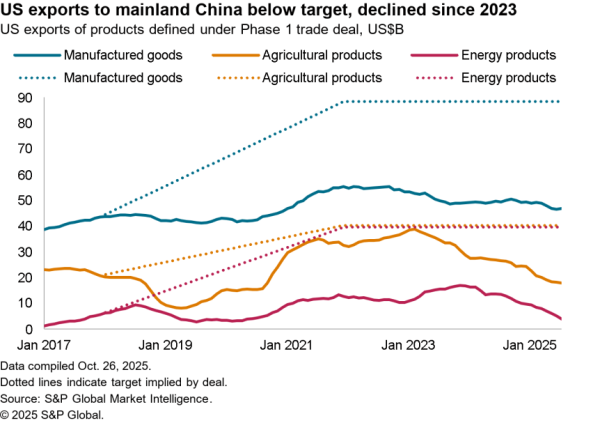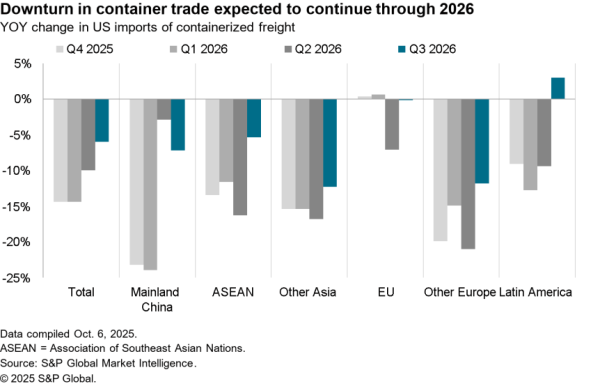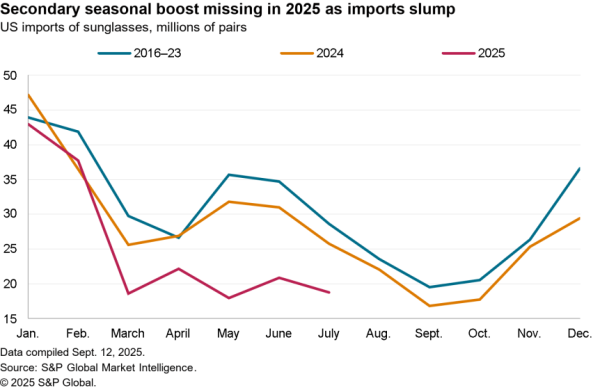U.S. Treasury income from customs duties – namely tariffs – fell by 6.8% year over year in March to $4.82 billion, Panjiva’s analysis of official data shows. That was the first annual decline since August 2017 and was the lowest for a single month since September 2018.
The largest driver was a 5.8% slide in imports, as outlined in Panjiva’s research of April 6. That in turn was due to a slump in shipments from China relating to both the disruptions caused by coronavirus as well as higher costs of Chinese imports resulting from tariffs.
There was also a reduction in list 4A, section 301 tariffs on imports from China to 7.5% from 15.0% in February as part of the phase 1 trade deal. A full month of the reduced tariff rate could cut a further $395 million from the Treasury’s tariff take in a single month.
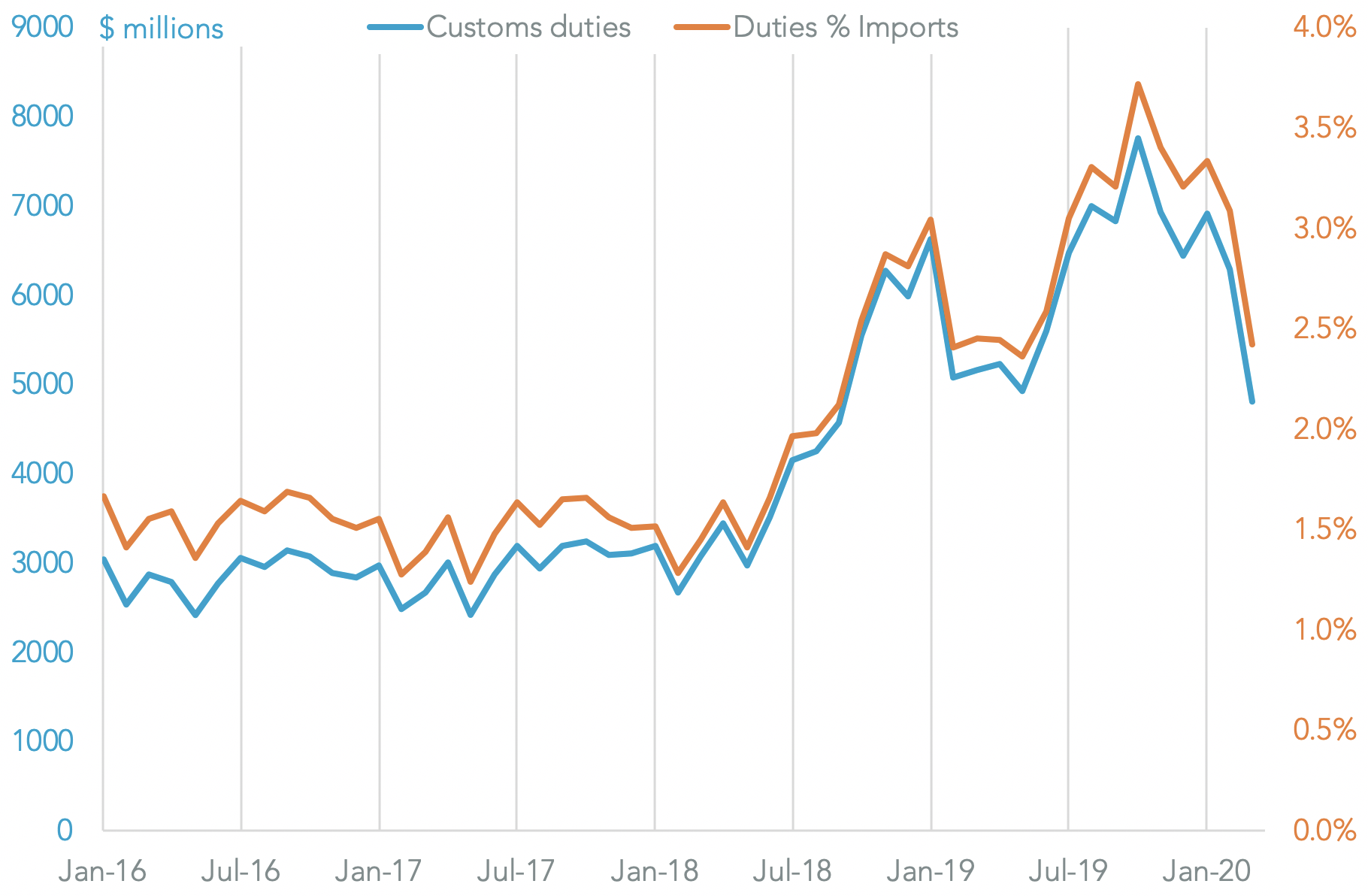
Source: Panjiva
While a cut in tariffs won’t help Chinese exporters – tariffs are a tax paid by importers, not a departure tax for exporters – it may reduce the pressure to make price concessions for American importers outwith changes in demand caused by the coronavirus outbreak in the U.S.
U.S. import price deflation accelerated to a 4.1% year over year drop in March, Panjiva’s analysis of Bureau of Labor Statistics data, from 1.3% a month earlier. That was mainly due to the collapse in oil prices which fed through to lower gasoline and diesel prices. Underlying imports excluding food and fuel still fell by 0.6% year over year however.
Within the latter there continued to be a process of price deflation from China, with a 1.2% year over year slide in average prices marking the 17th straight month of declines. That would suggest the process of burden sharing between Chinese exporters and U.S. importers via lower prices hasn’t yet run its course.
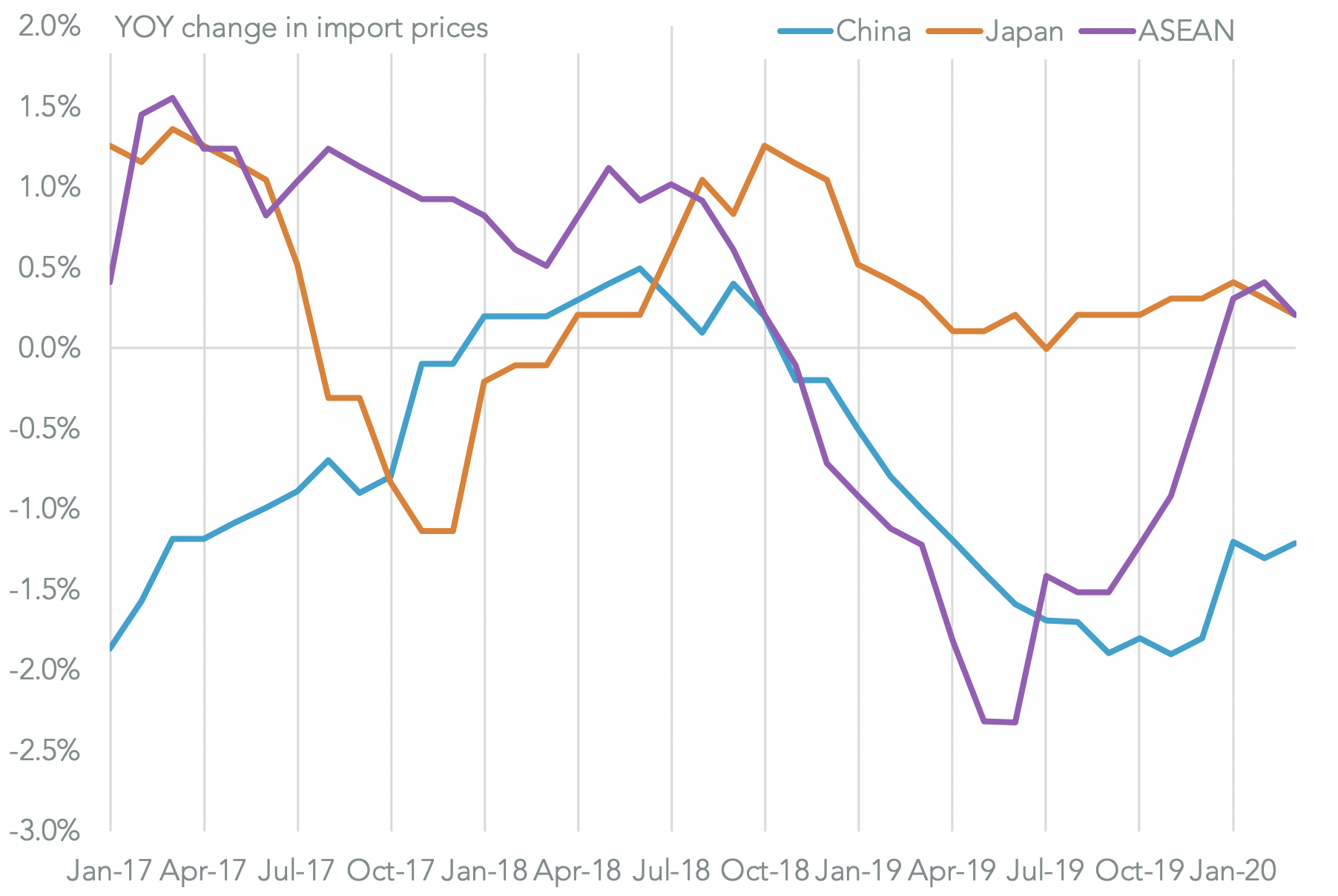
Source: Panjiva

